#Made In Czechoslovakia
Explore tagged Tumblr posts
Text

VINTAGE (32 Sided) Dice Made in Czechoslovakia Fortune Telling Crystal Ball
370 notes
·
View notes
Text

#the inseparables#matchbox labels#labels#matchboxes#matchbox#solo match works#made in czechoslovakia#czechoslovakia#illustration#vintage#vintage matchbox#vintage illustration
3 notes
·
View notes
Text
"Someone's donating Czechoslovakian money" - when was the last time Dan looked at the map ahahaha
#yesterday i was like.. hold on? Czechoslovakia?? he knows what it is?#and now i'm like HOLD ON#he made slovakia a part of czechia. rip#dnpg live
40 notes
·
View notes
Text

#postage stamp#stamps#nature#butterfly#butterflies#insect#insects#czechoslovakia#peacock butterfly#1961#1960s#ceskoslovensko made all my favorite stamps they are so beautiful
73 notes
·
View notes
Note
Well she sneaks around the world from Kiev to Carolina
She's a sticky-fingered filcher from Berlin down to Belize
She'll take you for a ride on a slow boat to China
Tell me where in the world is Carmen Sandiego?
Steal their Seoul in South Korea, make Antarctica cry Uncle
From the Red Sea to Greenland they'll be singing the blues
Well they never Arkansas her steal the Mekong from the jungle
Tell me where in the world is Carmen Sandiego?
She go from Nashville to Norway, Bonaire to Zimbabwe
Chicago to Czechoslovakia and back!
Well she'll ransack Pakistan and run a scam in Scandinavia
Then she'll stick 'em up Down Under and go pick-pocket Perth
She put the Miss in misdemeanor when she stole the beans from Lima
Tell me where in the world is Carmen Sandiego?
Oh tell me where in the world is... Oh tell me where can she be?
Ooh, Botswana to Thailand, Milan via Amsterdam,
Mali to Bali, Ohio, Oahu...!
Well she glides around the globe and she'll flimflam every nation
She's a double-dealing diva with a taste for thievery
Her itinerary's loaded up with moving violations
Tell me where in the world is Carmen Sandiego?

#i like how u made the carmens red that was cool#this is sort of a mix of the new and old ones isnt it?#used to say love boat but you've kept czechoslovakia and oahu#which i know arent in the special version#im going way out of character here but can you blame me im silly#(extremely neurodivergent about carmen sandiego)
8 notes
·
View notes
Text
ugh bohemian crystal IS superior
#my mum has been asking me to keep an eye out for crystal glasses for her#and just in time for her birthday i found some#hand cut! 24%! made in czechoslovakia!#and they are so beautiful in the sunlight i do not want to give them to her 😭#well i will#a day in the life#mine are french crystal and they are just not as nice
2 notes
·
View notes
Text
I have a world map and a globe in my room, both have Yugoslavia on them. And the globe lists Russia as the “Russian Soviet federated socialist republic” and Belarus listed as “White Russia”.
this is what happens when u buy stuff at thrift stores
#apersonwhotalks#The map has Czech and Slovakia listed separately#But the globe says “Czechoslovakia”#And I’m curious why#like was the map rlly made in the short period where Yugoslavia existed and Czechia and Slovakia were separate?
3 notes
·
View notes
Text

Bobbin-made hanging, designed by Luba Krejci (1925-2005), Czechoslovakia, 1964
8K notes
·
View notes
Text

Praga Alfa
#notice the right hand drive#it was likely made during that time when cars drove on the left side of the road in Czechoslovakia#praga#alfa#my spots#classic car show 2023#road car
0 notes
Text



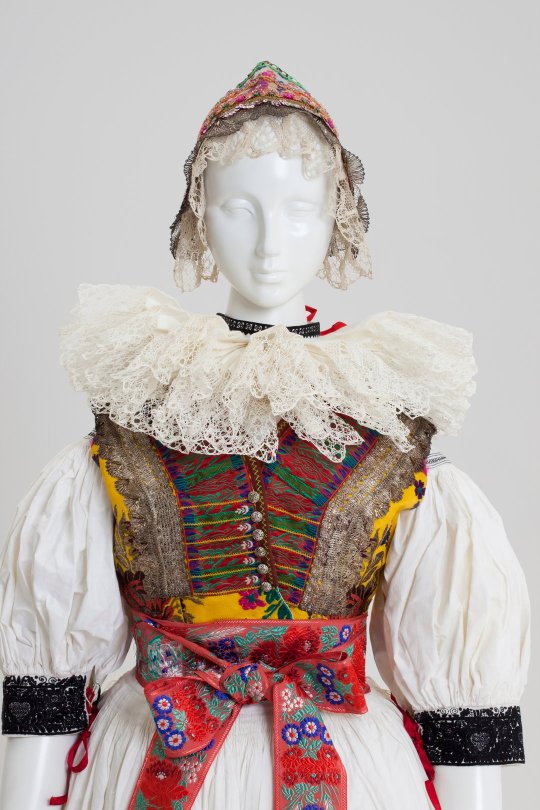




• Hanácký kroj traditional folk dress from Czechoslovakia.
Date: 1940
Medium: Cotton, embroidery, lace, silk, embroidered in part and worn by Olga Kupkova (nee Skacelova), designed and made in the Hana region of Moravia, former Czechoslovakia (Protectorate of Bohemia and Moravia).
#fashion history#history of fashion#dress#fashion#vintage clothing#vintage fashion#vintage#folklore#florkloric#ethnic#ethnicwear#traditional dress#traditional art#traditional#Hanácky#Hanáký kroj#Czechoslovakia#1940s fashion#1940's
1K notes
·
View notes
Text
Yassin al-Haj Saleh, "The Liquid Imperialism That Engulfed Syria," Commons, December 18, 2023:
Syria is a country of only 71,498 square miles in area, with a population of less than 24 million, and yet two global superpowers (the United States and the Russian Federation) and three of the largest regional powers (Iran, Turkey and Israel) are present on its territory. Israel has occupied the Syrian Golan Heights since 1967, and carries out almost nonstop incursions into Syrian air space today. In centuries past, prior to the heyday of European and Russian imperialism, Iran and Turkey were empires. While it is debatable whether they still qualify as imperial powers, they have never let go of their regional imperial ambitions. One way to understand them, regionally, is as “subimperial”: expansionist and interventionist, including militarily, in neighboring countries.
The U.S. and Russia have well-known histories of expansion and domination of peoples and territories. Imperialism was key to the very formation of both nations. But while Russia’s “manifest destiny” had been, for centuries, to expand into neighboring areas in Central Asia and Eastern Europe, it was in Syria that Moscow established its first overseas outpost. I will return to this crucial fact later.
In Syria, multiple imperial and subimperial powers have poured into one small country — some of them to protect a murderous regime, all of them annihilating any independent political aspirations among its people, dividing up sectors of Syrian society among themselves and their satellites, and denying Syrians the promise of a different future.
This unique situation was made possible by a combination of internal as well as international structures and dynamics involving five key powers — the U.S., Russia, Iran, Turkey and Israel...
One slogan of the recent protests that erupted in the southern city of Sweida on Aug. 20, 2023, speaks directly to the imperial-colonial complex that controls Syria:
["]We want the seaport, we want the land (the oil, in another formula) and we want the airport returned to us!["]
The seaport is Tartus, which, as mentioned, has been leased to Russia. The land is divided by the five occupying powers. And Damascus International Airport has, for several years now, been widely perceived to be under de facto Iranian control. The protestors in Sweida are thus drawing a connection between their economic hardships and the colonial relations between the regime and its Russian and Iranian protectors. In the version of the slogan that refers to oil, the implication is that it has been usurped by another imperial power: the U.S...
Lenin’s argument that imperialism represents “the highest stage of capitalism” has led many to think of imperialism as embodied in a very few capitalist powers. By this logic, there has been only one imperialism since World War II: Western imperialism, with the U.S. as its center and NATO as its military arm. The Soviet Union was not generally seen by those on the left as imperialist: not following World War II, nor after it invaded Hungary in 1956 and Czechoslovakia in 1968, nor even after it invaded Afghanistan in 1979. Similarly, Putin’s Russia has not generally been understood as imperialist, even after the annexation of Crimea in 2014 and the intervention in Syria in 2015. For much of the so-called anti-imperialist left, not even the full-scale invasion of Ukraine in February 2022 was enough.
This conception of imperialism must be challenged. The case of Syria requires a paradigm shift in the understanding of imperialism and the theorizing of new practices and phenomena pertaining to it.
Ultranationalism, expansion, dismissal of international law, exceptionalism, imperial imaginaries — these are characteristics of many powers in the age of the war on terror. With “terror” identified as the principal political evil globally, any state that joins in this alleged war can gain international legitimacy — even those engaged in war crimes and murder on an industrial scale. This has dealt massive blows to the rule of law both locally and internationally. It has contributed to a securitized politics, it has promoted thuggery among political elites and has weakened democracy and popular movements everywhere. Imperialism has permeated the practices of power in many countries, among which Syria is arguably the most unfortunate, with no fewer than five expansionist powers on its territory.
The concept of liquid imperialism is an attempt to capture the fact that five different powers have penetrated one small country. But it also speaks to the lack of solidity or coherence in these powers’ strategies, practices, visions and commitments. Unlike the imperial projects of the past, in Syria there is no “civilizing mission.” Natural resources are not a primary motive (though the intervening states have seized whatever they can get their hands on, from oil and phosphates to seaports and airports, to water and real estate). Rather, this is a scramble to control the future of the country.
There is also a liquid aspect in the relations among the five colonial powers. In Syria, we have two Russias — one of them is called the U.S. On a rhetorical level (especially at the beginning of the uprising), Moscow and Washington seemed to be on opposite sides: The Kremlin stood by Assad and the White House denounced him. Yet operationally, Russia and the U.S. were effectively on the same side — especially after the Islamic State came into the picture and became the central focus of U.S. strategy in Syria. From that point forward, Moscow and Washington were on the same page: The two powers closely coordinated “deconfliction” and their military personnel were on the phone to each other on a daily basis to avoid planes flying in the same location at the same altitude and to ensure airstrikes didn’t hit one another’s “friendlies.” For all the bluster about Washington wanting “regime change” in Syria, the exact opposite was the case. The researcher Michael Karadjis has demonstrated that U.S. policy in Syria was decidedly one of “regime preservation.”
190 notes
·
View notes
Text
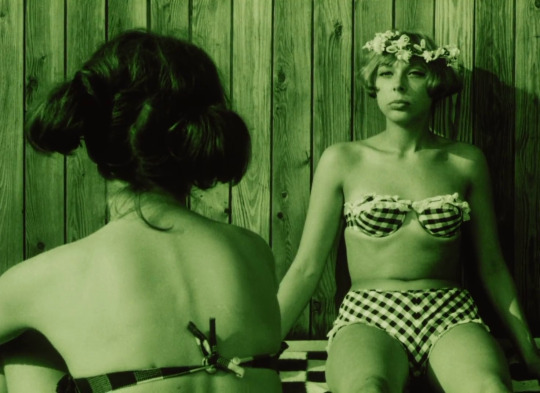
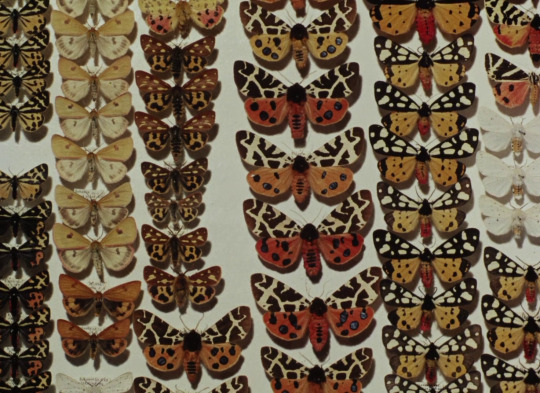
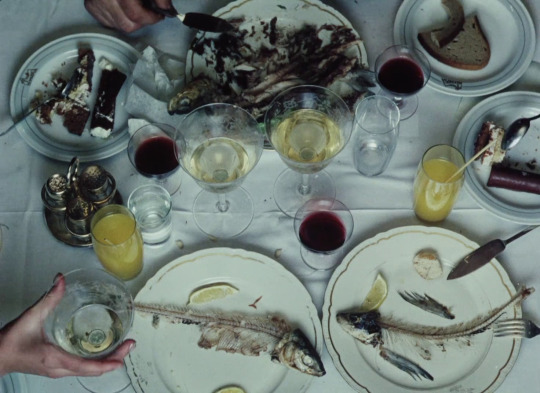
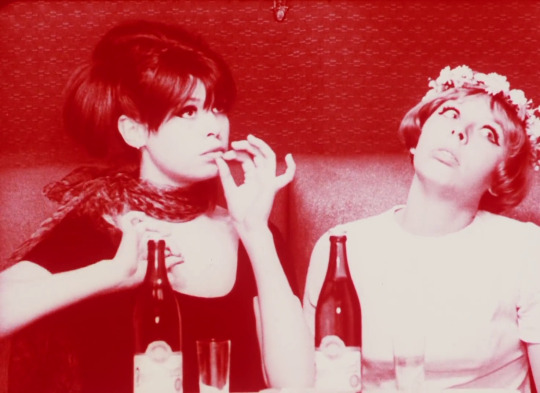

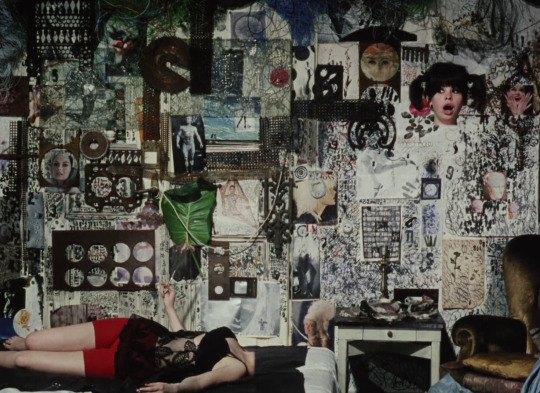
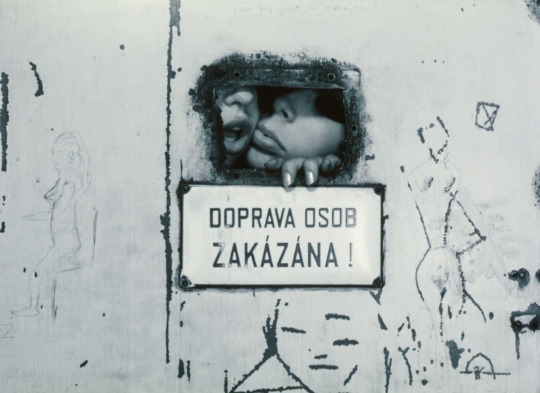

Daisies (1966)
"When the Czech director Věra Chytilová made Daisies, her second feature, Czechoslovakia had endured nearly two decades of repressive Communist rule, and she was one of the leading voices in a new generation of filmmakers who expressed resistance through gestures of allegorical insubordination that were semantically slippery enough to possibly get by the censors. Similarly, the Maries operate like guerrilla insurgents across Prague, disguising their true intentions and refusing to dutifully submit their bodies for either labor or male gratification."
#daisies#daisies 1966#věra chytilová#jitka cerhová#ivana karbanová#1960s#1966#filmedit#film#cinema#movies
458 notes
·
View notes
Text

Sara Salkahazi was a Hungarian Catholic journalist who saved one hundred Jews during the Holocaust and paid the ultimate price for her bravery.
Born to a German family in Kassa, Hungary (now Slovakia) in 1899, Sara was described by her brother as a “tomboy with a strong will and a mind of her own.” A high-energy woman who spoke several languages, Sara worked as an elementary school teacher, a bookbinder and a hatmaker before becoming a journalist and editor of the National Christian Socialist Party of Czechoslovakia. She wasn’t particularly religious and considered herself agnostic or even atheist.
In 1929, Sara’s life changed when she discovered the Sisters of Social Service, a Catholic religious order founded in Hungary in 1923. After World War I, social upheaval and economic disaster created widespread poverty and suffering, and the SSS’s mission was to alleviate human suffering, especially among women and children. Sara attended a meeting of the group, and was deeply inspired. These women of faith were truly making a difference, and Sara knew she had to be part of it. Sara didn’t do anything in life halfway, and within a year of that first meeting, Sara took her first vows on Pentecost 1930. Her personal motto became, “Here I am; send me!”
Sara began working at the Catholic Charities office in her hometown, where she managed the bookstore, organized charitable drives, and published a magazine called “Catholic Women.” Never afraid of undertaking ambitious projects, she organized all the Catholic women’s groups into a Catholic Women’s Association. As part of this effort, Sara also started the National Girls Movement. As a working woman, Sara had a particular affinity for other girls and women who worked, either out of necessity or choice. She started a women’s vocational college, a home for working girls, and a series of training courses. Meanwhile Sara continued writing, including a popular play on the life of St. Margaret of Hungary.
Unfortunately, as a chain-smoking ex-atheist journalist, Sara didn’t fit in with the other Sisters and this became a problem. The more she achieved, the more others unfairly suspected she was just trying to draw attention to herself. They doubted she truly had a vocation to lead the religious life, and they actually refused to allow her to renew her vows or to wear the habit for a year. Stung by the rejection, Sara considered leaving the order, but ultimately decided to continue her work as a Sister of Social Service, even without an official vow or a habit. She made plans to relocate to Brazil, where a Hungarian Benedictine convent was looking for Sisters to assist their mission, but before she could move, World War II broke out and Sara found a new mission, which would define the rest of her life.
As Hitler rose to power in the 1930’s, so did his close ally the Hungarian Nazi party, also known as the Arrow Cross. Around this time, as a form of protest, Sara changed her German-sounding name to the Hungarian version. The Arrow Cross’ path to power in Hungary began with recruiting the poorest and most marginalized members of society, including alcoholics, ex-cons, career criminals, sex offenders, and those with mental health issues that made it impossible to hold down a job. The Arrow Cross whipped up their followers to commit violence against Jews, intellectuals, and others who spoke out about their fascist reign of terror.
In response to the growing persecution of Jews, Sara sprang into action. She turned her Working Girls Homes into safe havens for Jews desperate to escape the Arrow Cross. She housed at least a hundred Jews in buildings belonging to the Sisters of Social Service, often right under the nose of the Gestapo. Absolutely devoted to the cause of saving Jews, Sara made a formal pledge to God to sacrifice herself if the other Sisters weren’t harmed. This text survived the war.
Tragically, Sara was betrayed by a woman working in one of the safe houses. While Sara was out, the Arrow Cross stormed the building. Sara heard about what was happening, and could have run away and stayed safe. Instead she made the fateful decision to return. Sara was arrested by the Gestapo that day, along with four Jewish women and a Christian co-worker. The six women were marched to the bank of the Danube River on December 27, 1944, where they were shot and dumped into the water. Sara’s body was never recovered. She was 45 years old.
This horrific event was kept secret until 1967, when the belated trial of some Arrow Cross members revealed the details of their crimes against humanity. Two years later, the daughter of one of the Jews killed alongside Sara nominated her to Israeli Holocaust Memorial Yad Vashem as a Righteous Gentile, and she received this posthumous honor in 1969.
In 2006, Sara was beatified by Pope Benedict XVI, who said “She was willing to assume risks for the persecuted in days of great fear. Her martyrdom is still relevant, and represents the foundations of our humanity.” Abraham Foxman, a Holocaust survivor saved by his Catholic nanny, said “The honor bestowed by Pope Benedict XVI on Sister Sara Salkahazi for risking and eventually giving her life to save Jews in peril is an important statement by the church. It is unfortunate that there were not more individuals like Sister Sara, but her example must be held up to demonstrate how lives can be saved when good people take action to confront evil.”
For sacrificing her life to save a hundred Jewish strangers, we honor Sara Salkahazi as this week’s Thursday Hero.
67 notes
·
View notes
Text

A c1920 Art Deco necklace with foil-backed purple glass in a laurel-like design. Mounted in brass and made in Czechoslovakia.
eriebasin.com
254 notes
·
View notes
Text

afsfsds
game show is on the tv. objective: a city is named, contestants must name the country
city: prague
my dad, confidently: czechoslovakia
#like at least my dad like. when he was learning geography in school it WAS czechoslovakia#this is so funny but it’s also reminding me of ancient tumblr discourse where a fairly popular post claimed#that calling smth ‘bohemian’ was just referencing a made-up country#which ?????#incredible website. no notes.
22 notes
·
View notes
Text



W. H. Murray was born on March 18th 1913 in Liverpool.
Many of you might not heard of William Hutchinson Murray to give him his full name, but he arguably did more to popularise Scotland as a walking and climbing destination than anyone else in the past century, and that includes the late Tom Weir, who was largely only known to us Scots.
His father, who was killed at Gallipoli in 1915, had been an enthusiast for the outdoors, but it was not until 1934 that a passion for the mountains was awakened in Murray himself. He overheard a mountaineer talking of a weekend climb of An Teallach in in terms that made Murray dream of experiencing the mountains for himself.
So early in 1935 he set off for one of the very few mountains he had heard of in Scotland, The Cobbler, near Arrochar. This he climbed in winter, by himself, and without maps, proper clothing or equipment. As he says in his book, Undiscovered Scotland: "From that day I became a mountaineer." Murray spent the remainder of the 1930s walking and then climbing throughout the length and breadth of Scotland, becoming a particular pioneer of winter climbing in the Western Highlands. You have to note that nowadays Murray would have been slated for undertaking such a task without being suitably equipped, but this was in the days before health and safety.
At the outbreak of World War II he enlisted in the Argyll and Sutherland Highlanders and saw action in the Middle East and North Africa, but was captured by a German Panzer division in Egypt in 1942. A passage in Mountain magazine from 1979 describes the moments after his capture:
To my astonishment, he [the German tank commander] forced a wry smile and asked in English, 'Aren't you feeling the cold?' ... I replied 'cold as a mountain top'. He looked at me, and his eyes brightened. 'Do you mean – you climb mountains?' He was a mountaineer. We both relaxed. He stuffed his gun away. After a few quick words – the Alps, Scotland, rock and ice – he could not do enough for me.
He saw out the war in camps in Italy, Germany and Czechoslovakia and it was in these camps he started writing, paper was in short supply and he used the only paper available to him – rough toilet paper supplied by The Red Cross. The manuscript was found and destroyed by the Gestapo. To the incredulity of his fellow prisoners, Murray's response to the loss was to start again, despite the risk of its loss and that his physical condition was so poor from the near starvation diet that he believed he would never climb again. The rewritten work was finally published in 1947, Mountaineering in Scotland and it's follow up Undiscovered Scotland were best sellers and have an honoured place on the bookshelves of many enthusiasts.
Incarceration left its mark on many PoWs, but Bill Murray continued the activity he loved and in 1950 led expeditions to Garhwal and Almora in the Himalayas. He was deputy leader on the reconnaissance of Everest in 1951, but difficulties in acclimatising to the altitude excluded him from the successful assault by Edmund Hillary and Sherpa Tenzing on the world's highest peak in 1953.
In later life he wrote extensively - guidebooks, works of topography, magazine articles and fiction. He was awarded the Mungo Park Medal of the Royal Scottish Geographical Society in 1953, his work includes The Scottish Himalayan Expedition, Glencoe, Blackmount and Lochaber : a regional guide, Companion Guide to the Western Highlands of Scotland and Rob Roy MacGregor – His Life and Times, as well as several works of fiction
W.H. Murray played an increasingly important role in issues to do with the environment of Scotland from the 1960s onwards. In 1960 he surveyed Scotland's mountain areas for the National Trust for Scotland, and he served on the Countryside Commission for Scotland from 1968 to 1980. He was also Chairman of the Scottish Countryside Activities Council from 1968 to 1982; President of the Mountaineering Council for Scotland from 1972 to 1975; President of the Scottish Mountaineering Club from 1962, and Honorary President of it from 1989; and a founding Trustee of the John Muir Trust until 1986.
His autobiography, The Evidence of Things Not Seen: A Mountaineer's Tale, was completed on his death by his wife Anne, he passed away on March 18th 1996 a day after his 83rd birthday.
33 notes
·
View notes